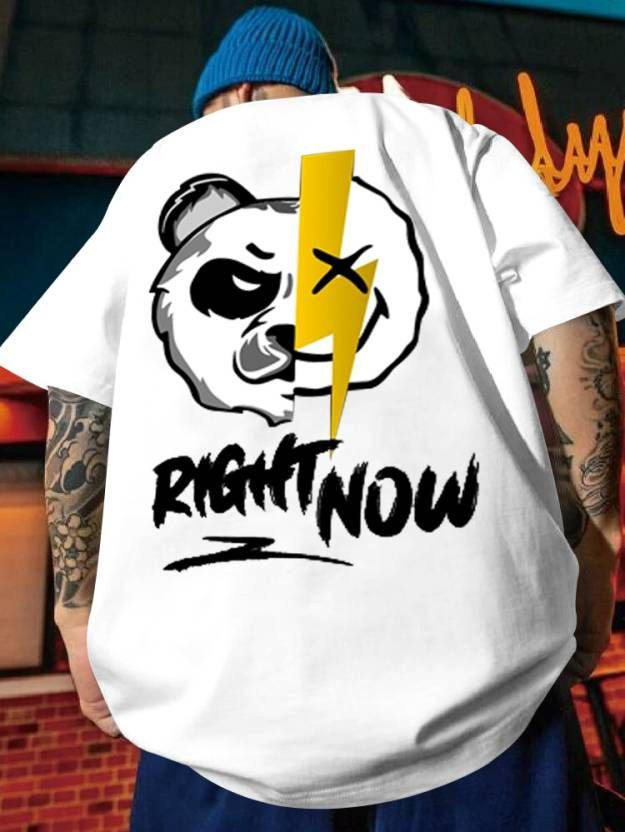Currently Empty: $0.00

The T-shirt, an iconic piece of clothing, is arguably one of the most important and versatile garments in modern fashion. What began as a simple undergarment has now transcended its original purpose to become a powerful symbol of self-expression, identity, and culture. Throughout its journey, the T-shirt has undergone numerous transformations, influenced by social, political, and cultural movements, and continuously adapted to meet the evolving tastes of the masses.
This article delves into the history, evolution, and significance of T-shirts in modern fashion. From their humble beginnings as functional clothing to their current status as a fashion statement, T-shirts have made an indelible mark on the world of fashion.
The Origins and Early History of T-Shirts
The story of the T-shirt begins in the late 19th century. Initially, T-shirts were designed to serve as an undergarment for the U.S. military during the Spanish-American War in 1898. These early T-shirts were simple, practical garments made of soft cotton and were intended to be worn beneath uniforms to provide comfort and breathability in hot weather.
At the time, T-shirts were worn mainly by soldiers, laborers, and manual workers. They were not considered fashionable but rather a functional piece of clothing. The T-shirt’s evolution into a mainstream garment began in the 1930s when it started to appear in civilian wardrobes as a comfortable, casual piece of clothing.
However, it wasn’t until the 1940s and 1950s that the T-shirt truly began to emerge as a significant cultural and fashion item. This transformation was catalyzed by Hollywood stars such as Marlon Brando and James Dean, who wore T-shirts in their iconic roles. Brando’s portrayal in A Streetcar Named Desire (1951) and Dean’s role in Rebel Without a Cause (1955) helped to solidify the T-shirt as a symbol of youth rebellion and nonconformity.
In the decades that followed, the T-shirt’s popularity soared, and it became firmly entrenched as a symbol of counterculture, freedom, and youthful rebellion.
T-Shirts in the 1960s: A Symbol of Cultural Change
The 1960s were a transformative period for the T-shirt. The counterculture movement of the time, which focused on themes of freedom, peace, and social change, adopted the T-shirt as a means of self-expression. Political movements, such as the Civil Rights Movement and anti-Vietnam War protests, often saw activists wearing T-shirts with messages of protest and solidarity. These graphic T-shirts became powerful symbols of dissent, allowing wearers to communicate their views in a direct and visual way.
During this period, the graphic T-shirt became a staple. Artists, musicians, and designers began to use T-shirts as a canvas for expressing messages, symbols, and designs that represented their political and cultural views. The iconic black power fist logo, as well as messages promoting peace and equality, were often seen on T-shirts worn by activists.
Musicians also played a major role in popularizing T-shirts with slogans and graphic prints. As rock and roll culture gained prominence, T-shirts featuring the logos of famous bands and musicians became a way for fans to express their allegiance. Band T-shirts became popular in the 1960s and 1970s and remain a prominent feature of the T-shirt market today.
T-Shirts and Pop Culture in the 1970s and 1980s
In the 1970s and 1980s, the T-shirt’s role as a pop culture artifact continued to evolve. The rise of punk rock in the late 1970s saw the T-shirt become a form of anti-establishment protest. Punk bands like the Sex Pistols and The Ramones used T-shirts to promote their rebellious messages, often emblazoning their shirts with anti-authoritarian slogans or controversial imagery.
Similarly, the 1980s saw the emergence of the graphic T-shirt as a vehicle for personal expression. Movie quotes, famous logos, and pop culture references became common motifs on T-shirts. Celebrities, actors, and athletes began to wear T-shirts in ways that connected with the masses, helping to solidify the T-shirt’s place in popular culture.
T-shirts became highly marketable items, with brands and businesses recognizing their potential as promotional tools. The 1980s marked the beginning of the T-shirt as a medium for advertising, with companies and sports teams printing logos, mascots, and product names on T-shirts to promote their brands. The marketing of T-shirts in this manner revolutionized the way they were sold and distributed.
The Role of T-Shirts in Modern Fashion
By the 1990s and early 2000s, T-shirts had become an essential component of everyday wear and mainstream fashion. No longer relegated solely to casual or streetwear attire, T-shirts found their place in high fashion. Designers and luxury brands began incorporating T-shirts into their collections, using them as a means of making artistic or political statements.
T-shirts began to be seen as an important part of personal branding. People used T-shirts to represent their interests, beliefs, and affiliations, often wearing shirts with logos, slogans, or images that conveyed messages about their identities. Music and sports culture continued to influence T-shirt design, with brand names, band logos, and iconic imagery becoming staples of popular fashion.
The 2000s saw the rise of the “designer T-shirt,” a luxury version of the basic garment that was adorned with brand logos, custom designs, and high-end materials. Designers such as Jean-Paul Gaultier, Alexander McQueen, and Louis Vuitton began creating high-fashion T-shirts, turning the basic garment into a luxury item.
T-Shirts and Streetwear
Streetwear culture, which gained momentum in the 1990s, has played a significant role in shaping the modern T-shirt. Streetwear is a style of fashion that originated in urban environments, particularly in skateboarding and hip-hop communities. T-shirts became one of the defining elements of streetwear, as brands like Supreme, Stüssy, and Off-White began using T-shirts as a canvas for bold designs, logos, and limited-edition prints.
Streetwear’s impact on the T-shirt industry cannot be overstated. The rise of these niche brands and the increasing popularity of urban fashion have influenced the way T-shirts are designed, marketed, and sold. Today, streetwear-inspired T-shirts are highly sought after, and limited-edition designs often sell out within minutes of being released.
T-shirt collaborations have also become a significant part of the fashion landscape. Major brands, celebrities, and artists collaborate to create exclusive T-shirt designs that reflect their individual styles and cultural influences. These collaborations have helped to keep the T-shirt relevant in the ever-changing world of fashion.
T-Shirt Printing Techniques
One of the key factors in the T-shirt’s transformation from basic garment to fashion item is the development of printing techniques. Early T-shirts were typically plain and unadorned, but the advent of screen printing in the 1960s allowed for the mass production of T-shirts with bold, colorful designs.
Screen printing remains one of the most popular methods for printing T-shirts. In this process, ink is pushed through a stencil or mesh screen onto the fabric. This allows for vibrant, detailed designs to be transferred onto the T-shirt, making it a popular method for creating everything from band T-shirts to custom designs for individuals.
In recent years, digital printing has gained popularity as an alternative to traditional screen printing. Digital printing allows for more intricate and detailed designs to be printed directly onto the fabric using specialized printers. This method is particularly popular for small runs of custom T-shirts and allows for greater flexibility and variety in design.
Heat transfer printing and direct-to-garment (DTG) printing are also commonly used techniques. Heat transfer printing involves applying a design to a T-shirt using heat and pressure, while DTG printing directly prints the design onto the fabric using inkjet technology.
Sustainability and Ethical T-Shirt Production
As environmental concerns grow, the fashion industry has come under increasing scrutiny for its impact on the planet. The T-shirt industry is no exception, as the production of cotton and synthetic fabrics can contribute to pollution and waste. However, in recent years, there has been a growing movement toward sustainable and ethical T-shirt production.
Organic cotton, which is grown without the use of synthetic pesticides or fertilizers, has become a popular alternative to conventionally grown cotton. Organic cotton production is less harmful to the environment and supports better conditions for farmers. Similarly, T-shirts made from recycled materials, such as recycled plastic bottles and post-consumer waste, are becoming more prevalent.
Ethical production practices are also gaining importance. Many brands are committed to ensuring that their T-shirts are made in factories with fair labor practices, where workers are paid fair wages and work in safe conditions. Transparency in the supply chain is becoming an increasingly important factor for consumers who want to support brands that prioritize sustainability and ethical labor practices.
The Future of T-Shirts
The T-shirt has come a long way from its origins as a simple undergarment. Today, it is a versatile fashion item that transcends borders, cultures, and demographics. As technology continues to advance, new printing techniques and fabrics will allow for even more creativity and personalization in T-shirt design.
Sustainability will remain a key focus for the future of T-shirt production. As consumers become more conscious of the environmental impact of their clothing choices, the demand for eco-friendly T-shirts made from organic cotton, recycled materials, and other sustainable fabrics will continue to grow.
Moreover, the role of T-shirts as a medium for self-expression will only become more significant. With the rise of social media and the continued popularity of personalized fashion, T-shirts will remain a powerful tool for individuals to communicate their identities, beliefs, and affiliations to the world.

